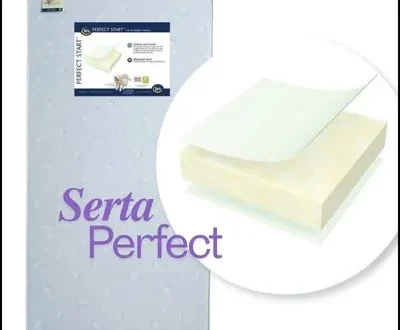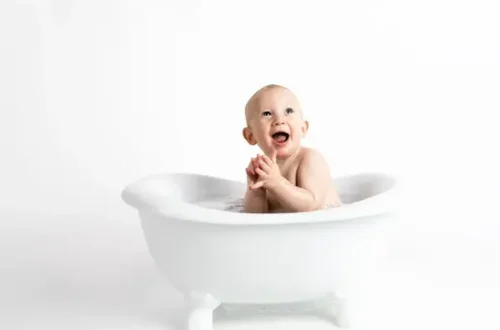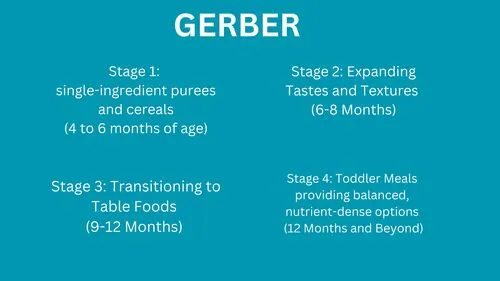Best Cribs for Infants: An Overview
When it comes to preparing for a new baby, one of the most significant purchases is a crib. This essential piece of furniture provides a safe sleeping environment for infants, allowing parents to rest easier knowing their little one is secure. In this article, we will explore the various types of cribs available, safety considerations, tips for choosing the right crib, and best practices for using cribs effectively.
The History of Cribs
Understanding the evolution of cribs can provide insight into modern practices. Cribs for infants have been used for centuries, evolving in design and functionality.
- Early Designs: The earliest known cribs date back to ancient Egypt, where infants were placed in wooden or woven baskets. As societies developed, cribs became more structured, often made from wood and featuring intricate designs.
- Victorian Era: The Victorian period saw the introduction of more ornate cribs, often with decorative elements. Safety was less of a concern, leading to various designs that could be hazardous.
- Modern Innovations: In the 20th century, crib safety standards began to emerge, culminating in regulations that govern crib design today. Features such as adjustable mattress heights and non-toxic materials have become standard.
The Importance of a Crib
A crib serves multiple purposes beyond just a place for infants to sleep. It is a designated space for rest, comfort, and security. Given that infants spend a significant amount of time sleeping up to 16–17 hours a day in their first few months, a well-chosen crib can contribute to their overall development and well-being.
Safety First
Safety is the top priority when it comes to cribs. The American Academy of Pediatrics (AAP) provides guidelines to ensure that infants are placed in a safe sleep environment. Here are some key safety considerations:
- Crib Standards: Make sure the crib meets current safety standards. The Consumer Product Safety Commission (CPSC) regulates crib safety in the United States. Look for cribs that comply with these regulations.
- Slat Spacing: Ensure the slats are no more than 2-3/8 inches apart to prevent an infant’s head from slipping through.
- No Drop Sides: Avoid cribs with drop sides. These have been banned in many places due to safety concerns.
- Mattress Fit: The mattress should fit snugly against the sides of the crib to avoid gaps where an infant could get trapped. There should be no more than two fingers’ width between the mattress and the crib sides.
- Age and Weight Limits: Follow the manufacturer’s guidelines regarding age and weight limits. Transition to a toddler bed when the infant begins to climb out of the crib.
- Bedding: Use a firm mattress with a fitted sheet only. Avoid pillows, blankets, and stuffed animals, as these pose suffocation risks.
Top 10 Best Cribs for Infants with the Best Amazon Reviews
Finding the perfect crib for your baby is an important decision that affects their safety, comfort, and your convenience. To help you make the best choice, we’ve rounded up the top cribs on Amazon based on customer reviews, quality, and features. Here are the Best Cribs for Infants for every style and budget, with features that cater to both parents and babies.
1. DaVinci Kalani 4-in-1 Convertible Crib
- Features: Made from sustainable New Zealand pine wood, this crib converts to a toddler bed, daybed, and full-size bed. It’s Greenguard Gold certified, meaning it’s low on chemical emissions for a safer nursery environment.
- Pros: versatile, sturdy construction, and easy conversion options. Many parents love its durability and elegant design.
- Cons: conversion kits are sold separately.
- Amazon Rating: ★★★★☆
- Check Price on Amazon
2. Graco Benton 4-in-1 Convertible Crib
- Features: The Graco Benton crib converts to a toddler bed, daybed, and full-size bed, allowing it to grow with your child. It also has adjustable mattress height settings.
- Pros: Affordable, simple design, and good build quality. Parents appreciate its ease of assembly and classic appearance.
- Cons: Lower maximum weight capacity in toddler bed mode.
- Amazon Rating: ★★★★☆
- Check Price on Amazon
3. Babyletto Hudson 3-in-1 Convertible Crib
- Features: This stylish crib features rounded spindles and a modern design. It’s Greenguard Gold certified and converts to a toddler bed and daybed. Comes with a toddler bed conversion kit included.
- Pros: Eco-friendly, sturdy, and stylish. Parents love the modern look and solid construction.
- Cons: Higher price range compared to other cribs.
- Amazon Rating: ★★★★★
- Check Price on Amazon
4. Delta Children Emery 4-in-1 Convertible Baby Crib
- Features: Delta Children’s Emery Crib is a 4-in-1 convertible crib that grows with your child, from crib to toddler bed, daybed, and full-size bed. It’s JPMA certified for safety.
- Pros: Affordable, safe, and easy to assemble. Many parents find it a great value for the quality and adaptability.
- Cons: Conversion kit sold separately.
- Amazon Rating: ★★★★☆
- Check Price on Amazon
5. Dream On Me Synergy 5-in-1 Convertible Crib
- Features: This versatile crib transitions to a toddler bed, daybed, and full-size bed and comes with multiple color options to match any nursery decor.
- Pros: Affordable, versatile, and available in multiple colors. Parents love its ability to grow with the child.
- Cons: Conversion kit for full-size bed sold separately.
- Amazon Rating: ★★★★☆
- Check Price on Amazon
6. Storkcraft Tuscany 4-in-1 Convertible Crib
- Features: The Storkcraft Tuscany Crib offers four configurations: crib, toddler bed, daybed, and full-size bed. It’s built from solid wood and wood composites and meets JPMA safety standards.
- Pros: Durable, sturdy construction, and beautiful design. Many parents love the overall value and longevity.
- Cons: Assembly can be time-consuming.
- Amazon Rating: ★★★★☆
- Check Price on Amazon
7. Union 3-in-1 Convertible Crib
- Features: Made from sustainable New Zealand pine, this crib offers three conversions: crib, toddler bed, and daybed. It’s Greenguard Gold certified for safety and low chemical emissions.
- Pros: Simple, affordable, and eco-friendly. Parents love the minimalist design and durability.
- Cons: Lacks a full-size bed option.
- Amazon Rating: ★★★★☆
- Check Price on Amazon
8. Serta Fall River 4-in-1 Convertible Baby Crib
- Features: This crib from Serta converts to a toddler bed, daybed, and full-size bed. It’s made with durable materials and features adjustable mattress heights.
- Pros: sturdy, easy to assemble, and high-quality construction. Many parents appreciate the style and safety certifications.
- Cons: Higher price range.
- Amazon Rating: ★★★★☆
- Check Price on Amazon
9. Evolur Aurora 5-in-1 Convertible Crib
- Features: The Evolur Aurora Crib is a 5-in-1 convertible crib with an elegant, fairytale-inspired design. It converts from a crib to a toddler bed, daybed, and full-size bed with an elegant headboard.
- Pros: stunning design, high-quality construction, and long-lasting. Many parents appreciate the unique design and durability.
- Cons: The higher price and conversion kits are sold separately.
- Amazon Rating: ★★★★☆
- Check Price on Amazon
10. Nestig Wave Convertible Crib
- Features: This innovative crib grows with your child in three stages: mini crib, full crib, and toddler bed. It’s made from sustainably harvested Brazilian wood.
- Pros: eco-friendly, high-quality, and stylish. Parents love the design and how easily it transitions.
- Cons: Expensive compared to other cribs.
- Amazon Rating: ★★★★☆
- Check Price on Amazon
Types of Cribs
When selecting a crib, parents will find various types, each with unique features and benefits:
- Standard Cribs: These are the most common type, typically made of wood or metal. They come with adjustable mattress heights, allowing parents to lower the mattress as the baby grows.
- Convertible Cribs: These versatile cribs can transform into toddler beds, daybeds, or even full-size beds. They are an excellent long-term investment, adapting to a child’s growth.
- Mini Cribs: Ideal for smaller spaces, mini cribs take up less room but still provide a safe sleeping environment. They are great for apartment living or as a secondary crib for grandparents’ homes.
- Portable Cribs: Also known as playards or pack ‘n plays, these cribs are lightweight and foldable, making them perfect for travel. They often come with additional features like changing tables and storage.
- Moses Baskets and Bassinets: For newborns, these options offer a cozy and portable sleeping space. However, they are typically only suitable for short-term use, as infants grow quickly.
Choosing the Right Crib
When choosing a crib, consider several factors:
- Space: Measure the area where the crib will be placed to ensure a good fit. Consider leaving space for a changing table or additional furniture.
- Material: Look for cribs made from durable materials, preferably solid wood. Ensure that the finish is non-toxic, as babies are prone to chewing on furniture.
- Budget: Cribs come in a wide range of prices. While it’s tempting to opt for cheaper models, investing in a quality crib that meets safety standards is essential.
- Design and Style: Consider the nursery decor. Cribs come in various colors and designs, so choose one that complements your style.
- Ease of Assembly: Some cribs can be complicated to assemble. Read reviews to find models that are user-friendly.
Best Practices for Cribs for Infants Use
Once you have selected the perfect crib, it’s important to use it correctly to ensure your infant’s safety and comfort.
- Creating a Safe Sleep Environment: Place the crib in a quiet, safe area of the house, away from windows, curtains, and any potential hazards. The room should be kept at a comfortable temperature.
- Establishing a Sleep Routine: Consistency is key. Create a bedtime routine that helps signal to your baby that it’s time to sleep. This might include dimming the lights, playing soft music, or reading a bedtime story.
- Monitor Sleep Patterns: Pay attention to your baby’s sleep habits. If your infant seems uncomfortable or restless, check to ensure they are safe and that the mattress is firm and supportive.
- Avoid Co-Sleeping: The AAP recommends against co-sleeping, as it increases the risk of suffocation and Sudden Infant Death Syndrome (SIDS). Always place your infant in their crib to sleep.
- Regular Checks: Regularly inspect the crib for any loose screws or damaged parts. Maintain a safe environment by removing any items that could pose risks.
Transitioning from Crib to Toddler Bed
Around 2-3 years of age, your child will likely be ready to transition to a toddler bed. Signs that they may be ready include:
- Climbing out of the crib.
- Outgrowing the crib physically.
- Expressing interest in sleeping in a “big kid” bed.
When transitioning, make the process exciting. Involve your child in selecting their new bed, and keep their familiar bedding to provide comfort during the change.
Common Concerns
- SIDS Awareness: Sudden Infant Death Syndrome is a major concern for new parents. To reduce the risk of SIDS, always place your baby on their back to sleep, use a firm mattress, and avoid soft bedding.
- Teething and Crib Safety: As infants begin teething, they may chew on crib rails. Consider purchasing a teething guard or ensuring that the crib’s finish is non-toxic.
- Traveling with a Crib: If you’re traveling, portable cribs or pack ‘n plays can provide a safe sleeping space for your baby. Always check for safety standards when choosing travel cribs.
Eco-Friendly Crib Options
For environmentally conscious parents, eco-friendly is an excellent choice. Look for cribs made from sustainable materials and non-toxic finishes. Some brands offer organic mattresses free from harmful chemicals, ensuring a healthier sleep environment for your child.
Cultural Variations in Crib Use
Different cultures have unique approaches to infant sleep arrangements. Here are a few examples:
- Western Cultures: In many Western countries, the crib is the primary sleep space for infants, often placed in the parents’ bedroom initially. Safety standards are strictly followed, and cribs are typically used until children are ready for toddler beds.
- Co-Sleeping Practices: In various cultures, co-sleeping with infants is common. Parents may use floor mats, futons, or sidecar cribs that attach to the adult bed to keep the baby close while promoting safety.
- Alternative Sleeping Arrangements: In some cultures, infants may sleep in hammocks or woven baskets, which are believed to provide comfort and security.
Tips for Maintaining a Crib
Regular maintenance ensures the crib remains safe and functional.
- Regular Inspections: Check for loose screws, cracks, or any signs of wear and tear. Tighten any loose components immediately.
- Cleaning: Use mild soap and water to clean the crib. Avoid harsh chemicals that could leave harmful residues. Ensure that the mattress is also kept clean, as it can accumulate dust and allergens.
- Bedding Care: Wash the fitted sheets regularly and ensure they fit snugly to prevent slipping or bunching.
- Storage: If storing the crib for future use, disassemble it if possible and keep it in a dry, safe environment to prevent damage.
Common Misconceptions About Cribs
- More Bedding Equals More Comfort: Many parents mistakenly believe that adding blankets and pillows will make the crib more comfortable. In reality, these items increase the risk of suffocation and should be avoided.
- All Cribs Are Safe: Not all cribs are created equal. Always verify that a crib meets current safety standards, as older models may not comply.
- It’s Okay to Use a Hand-Me-Down Crib While hand-me-downs can be cost-effective, it’s crucial to ensure that the crib has not been recalled and meets current safety regulations.
- Baby Will Always Sleep Well: Some parents expect their infants to sleep through the night simply because they have a crib. Sleep patterns vary greatly among babies, and establishing good sleep habits is essential.
Creating an Optimal Sleep Environment
Besides the crib itself, several factors contribute to a safe and conducive sleep environment for infants:
- Room Temperature: The ideal room temperature for infant sleep is between 68-72°F (20-22°C). Use a thermometer to monitor the temperature and adjust accordingly.
- Lighting: A dimly lit room helps signal to the baby that it’s time to sleep. Consider using blackout curtains to block out external light during naps.
- Sound Environment: White noise machines can help drown out sudden sounds that might wake a sleeping baby. However, make sure the volume is kept at a safe level.
- Avoid Overstimulation: Keep the nursery a calm and quiet space. Limit toys and distractions in the crib to promote restful sleep.
Psychological Aspects of Cribs for Infants Use
The way parents approach crib use can also have psychological implications for both the parent and the child.
- Attachment and Security: A well-structured sleep routine that includes the crib can help foster a sense of security for the infant, supporting attachment development.
- Parenting Anxiety: New parents may feel anxiety about sleep safety. Educating themselves about crib safety standards and best practices can alleviate some of this stress.
- Transition Challenges: Transitioning from crib to toddler bed can be emotional for both parents and children. Parents should be patient and supportive during this change, emphasizing the positive aspects of moving to a “big kid” bed.
Eco-Friendly Considerations Cribs for Infants
As environmental concerns become more prominent, many parents seek eco-friendly options:
- Sustainable Materials: Choose cribs made from sustainably sourced wood or recycled materials. Brands that prioritize eco-friendly practices often have certifications to back their claims.
- Non-Toxic Finishes: Look for cribs with non-toxic finishes that do not contain harmful chemicals such as lead or phthalates.
- Organic Mattresses: Consider investing in an organic mattress made from natural materials, which can minimize exposure to chemicals.
Final Thoughts on Crib Safety and Care
The crib is often the first personal space an infant occupies, making it essential to choose wisely. The journey to parenthood comes with numerous decisions, and selecting a safe crib is one of the most critical. By staying informed about safety standards, understanding the different options available, and adhering to best practices, parents can create a nurturing sleep environment.
Ultimately, the goal is to promote healthy sleep habits that benefit both the infant and the parents. Remember that every child is unique, and while guidelines exist, trusting your instincts as a parent will always be essential. As you embark on this new chapter, a well-cared-for crib will not only be a safe haven for your little one but also a cherished part of your family’s early memories.
Summery
Choosing the right cribs for infants is a significant decision for any new parent. A safe, comfortable crib can provide peace of mind and contribute positively to an infant’s development. By understanding the various types of cribs available, adhering to safety guidelines, and following best practices for use, parents can create a nurturing sleep environment for their little ones.
As you embark on this exciting journey of parenthood, remember that a well-chosen crib is not just a piece of furniture; it’s a safe haven for your child during those early, formative years. Prioritize safety, comfort, and your unique needs when selecting the perfect crib, ensuring that it becomes a cherished part of your home for years to come.





What’s Happening i’m new to this, I stumbled upon this I’ve found It positively useful and it has helped me out loads. I hope to contribute & assist other users like its helped me. Good job.
Welcome! I’m so glad you found this helpful! It’s great to have you here, and I’m sure your contributions will be a fantastic addition. Don’t hesitate to jump in with any questions or insights—everyone’s input makes this place even better. Thanks for the kind words, and enjoy exploring!
Nice weblog right here! Additionally your website rather a lot up very fast! What host are you the usage of? Can I am getting your affiliate link to your host? I wish my website loaded up as quickly as yours lol
Thank you for the kind words! I’m glad you enjoy the blog. I’m currently using hostinger, which has really helped with the speed and performance of my site. Also, I am a SEO expert.I optimize my websites daily. On page & technical SEO must. What affiliate link are you looking? I appreciate your support, and if you have any other questions about setting up your site, feel free to ask!
What i do not understood is actually how you’re not actually much more well-liked than you may be now. You are very intelligent. You realize therefore considerably relating to this subject, produced me personally consider it from a lot of varied angles. Its like men and women aren’t fascinated unless it’s one thing to do with Lady gaga! Your own stuffs outstanding. Always maintain it up!
Thank you so much for your kind words! 😊 I’m thrilled that my insights resonate with you. It’s true, sometimes people gravitate toward trending topics or popular figures like Lady Gaga, but there’s so much value in exploring varied perspectives on any subject. I’ll keep sharing content that informs and inspires—your encouragement means the world! 🙌 Keep learning and growing. 💡✨
I¦ve been exploring for a little bit for any high quality articles or weblog posts on this kind of space . Exploring in Yahoo I finally stumbled upon this web site. Studying this information So i¦m satisfied to show that I have an incredibly excellent uncanny feeling I came upon just what I needed. I most indisputably will make sure to do not disregard this site and give it a look on a continuing basis.
Thank you so much for your kind words! 😊 We’re thrilled to hear that you found exactly what you were looking for. It’s always our goal to provide high-quality content that meets our readers’ needs. We’re glad you’ll be visiting regularly, and we’ll do our best to keep the site updated with fresh, valuable information. Don’t hesitate to reach out if there’s a specific topic you’d like us to cover!
I am not real good with English but I find this very easy to interpret.
Thank you! 😊 That the information is easy for you to understand makes us very happy. That’s exactly what we aim for—making information accessible to everyone. If you ever have questions or need clarification, feel free to ask. We’re here to help!